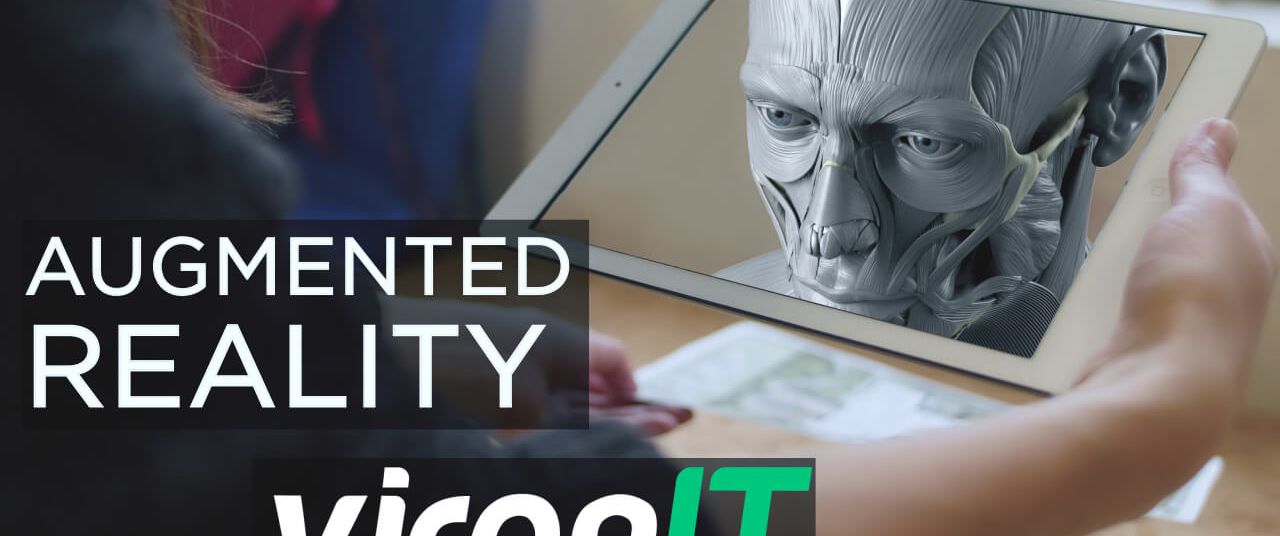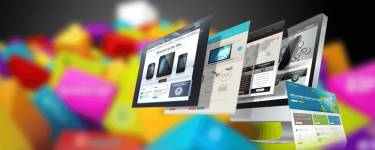The Benefits of Augmented Reality for Business

AR technology blurs the lines between the physical and digital worlds and offers a new way of interacting with customers. It has an enormous market potential that is only in the initial stages of being unlocked.
This article assumes a basic understanding of AR technology, the technologies it uses, and its benefits for your business. You will learn that AR is not just for entertainment purposes.
Let’s take a deep dive into AR development!
What is AR?
If you’ve ever used a Snapchat or MSQRT filter, scanned an Ikea catalog with your phone using their app, driven a car with a windshield speedometer display, or played Pokémon Go!, you are already familiar with AR.
The central theme of AR technology is to point your phone’s camera at a QR code or a picture, and see a 3D model.
In a nutshell, AR technology integrates digital information with the physical environment in real time. Through the addition of graphics, sound, haptic feedback, or smell to the natural world, AR is able to combine real life with a superimposed image or animation using the camera on a mobile device or special headgear. Such data as a travel speed indicator can be overlaid in a real-world setting, thus allowing the user to interact with the AR whilst simultaneously taking into account.
Technologies and Devices
We have collected examples of AR implementation.
AR Apps for iPhone and Android
AR for mobile is the most popular way to use AR technology because nearly everyone has a mobile device. According to a Tractica report, the use of mobile AR apps will increase to nearly 2 billion MAUs by 2022.
However, businesses should select a tool for AR app development according to the functionality of their mobile app. You can use ARCore SDK for Android Studio, ARKit, or Apple’s AR framework for iOS. You can also utilize third-party SDKs like Vuforia, Wikitude, EasyAR, and Kudan
To work with these technologies, we can use the Unity3D cross-platform engine or the native code of each platform on Java or Swift.
AR smart glasses and headsets (Hololens, Smart Glasses, etc.)
Smart glasses are the next most popular tool for AR technology. For example, the Microsoft team has created the Hololens, an amazing device that simply has no competitors and impresses with capabilities such as identifying 3D objects, networking with other Hololens devices, and an outstandingly high performance. You can put the glasses on and see both the real world and virtual objects.
You can also develop HoloLens Apps with Unity 3D.
WebAR (AR on the web)
WebAR is a responsive and information-rich website enhanced with AR content.
To integrate AR features into the mobile and desktop web using a browser, first ensure that the mobile browser supports a web-based AR framework and is compatible with hardware components such as cameras, gyros, etc.
There are a few web-based AR projects. One of the most popular projects is an AR.js solution to efficiently run AR on the web; it is available on GitHub.
So, you have a basic understanding of AR technology. Let’s move on to the benefits of AR for businesses.
But before we start, let’s discuss which functionalities are needed.
- Target recognition. Using computer vision, SDK finds the required image, determines its position, turn, and distance, and subsequently builds a 3D model. The target can be a picture or a 3D object like a mug or a sneaker.
- Recognition of floor and walls. This functionality is available for phones with depth-sensing cameras.
- Motion tracking support. This can be used for obtaining information about the pose from the device and applying this information to the Unity camera.
- Lighting detection. This is used to analyze the intensity of natural light.
- AR sharing or ARCloud. AR Cloud allows people to share their augmented experiences with others — even if they are standing next to each other. Others might be separated by hundreds or even thousands of miles. This functionality can be implemented using ARCore /(ARCore + ARKit) and Hololens.
In the video below, you can see a couple discussing ideas for how to redesign their living room. One can add personal digital input to the scene and simultaneously share that vision with the other device.
AR Uses
Advertisement
This is where the prospects for using AR for business needs are truly impressive. It allows customers to interact with a product on a new level, thus enhancing their engagement. You can visualize ads in 3D, rather than 2D, which is a significant benefit in itself. Here’s an example of how Pepsi Max surprised commuters with an unbelievable experience at a bus stop involving giant robots and UFO abductions.
You can demonstrate products before purchasing via a mobile application. For example, AR applications help customers to decide on the size and style of a new piece of furniture. One of the most popular examples comes from the Swedish retail giant IKEA. The IKEA Place AR app enables customers to “try on” products in their home, and take photos and videos of the result. It is so precise that customers can even see the texture of the furniture.
Retailers have integrated AR technology into customers’ in-store experiences. For instance, Lacoste created the LCST Lacoste AR mobile app that allows customers to try on shoes virtually.
American Apparel has also equipped customers with mobile app-driven experiences. Customers can open the app and scan American Apparel advertisements to receive product details, including customer reviews, color variants, and pricing.
Gamification
AR gamification allows businesses to provide the user with a new and exciting experience. In cooperation with a brand, this yields a positive effect. For example, customers can find AR objects in the store like Pokémon in Pokémon Go. The store gives scores, discounts, and other gifts to customers who do this.
The candy brand PEZ extends the brand experience to consumers’ homes through an additional avenue, aside from experiencing the product itself. This is a strategic way to build customer relationships and learn about user behavior.
Navigation
AR combined with rich geolocation data is already changing how we interact with the world. Using Maps SDK for Unity, businesses can create maps for hard-hitting indoor and outdoor navigation.
AR maps simplify the life of those who find it difficult to follow traditional GPS navigation. The program will lead your customers to your destination as a personal assistant might do.
Geolocation integration with an AR kit will provide a unique experience to tourists, allowing them to navigate easily, even in a completely unfamiliar city. Users will be able to get information about any building, location, or event.
Manufacturing
There are many examples of AR in manufacturing, so let’s look at a few in more detail.
Design. AR models help to estimate the functionality of the design and can be used for optimization purposes.
Complex assembly. AR applications provide workers with visual displays of the parts and details needed for assembly and information about the necessary instruments for every stage of the assembly process. They may highlight the finished pieces or give a complete 3D instruction.
Training. AR applications can be used to train new workers and to help experienced employees cope with new instructions.
Fashion
While AR is getting all sorts of press for its gaming-related applications, the fashion and retail industries were some of the first using the cutting-edge technology. Take a look at these cases.
Timberland had a virtual fitting room created using Kinect technology. They turned this fitting room into one of the main window displays, which was a strategic move to drive more foot traffic.
With L’Oréal’s recent acquisition of the AR company ModiFace, which specializes in cosmetics, it’s expected that the brand will continue to push the boundaries of AR. L’Oréal has already tested AR with its Makeup Genius app.
Converse’s mobile app allows people to imagine what a Converse product would look like without having to physically try on a pair by pointing your iPhone camera at your leg and subsequently getting a visual reference on how it would look.
The “Ink Hunter” app allows you to “try on” the tattoo you like by seeing what it would look like on your hand before going to the tattoo parlor. Simply draw a square smiley face on your hand or other body part, select a tattoo from the available catalog, and the app will immediately turn it into a picture.
Dating Industry
AR can virtually disrupt any industry. For example, an AR-based dating app will allow you to scan your surroundings to find app users and dating prospects, unlike traditional swipe left/right dating apps.
Healthcare
AR technology allows users to visualize health problems for prompt and accurate treatment. Furthermore, AR will significantly increase healthcare professionals’ ability to diagnose and treat conditions, allowing doctors to access data and patient information faster than ever before.
For more information, see VR app development for medical training and education
Entertainment and Gaming
AR and gaming are expected to go hand in hand in the coming years. AR’s ability to capture the world around us and add unique features adds a much-needed freshness to the entertainment space. One of the best examples of the use of AR in gaming is Pokémon GO. This is the legendary project by Niantic which brought AR games to the masses.
Pokémon GO is a geolocation game taking place in users’ physical surroundings. You catch and train Pokémon, and then fight other players and their “pets”.
The Benefits of Using AR for Business
Besides new user experiences, AR apps facilitate new opportunities for innovation. This technology is becoming an essential part of everyday life, so it’s worth mastering AR for business needs right now. Here are some advantages that businesses can derive from using AR apps:
AR is a new, unique, and outstanding technology allowing you to dazzle customers:
- Deeper than ever engagement with the brand
- A higher customization level
- Improves employee training effectiveness through work process visualization
- Increases sales by eliminating doubts about the practicability of purchase
- Greater publicity
- ‘On-the-go’ experiences
Whether you already work in an industry or you’re a newcomer, you can increase your traction by expanding your sphere of operations with the help of AR.
Have a plan to develop an AR app? We at VironIT, a software development company, are here to help you launch superior quality apps that will take your business to the next level.

 (8 votes, average: 4.75 out of 5)
(8 votes, average: 4.75 out of 5)



Imagination Park says:
AR games are already creating the buzz. Now only wait is of some real life applications. They will arrive sooner than later.
ปั๊มไลค์ says:
Like!! Really appreciate you sharing this blog post. Really thank you! Keep writing.